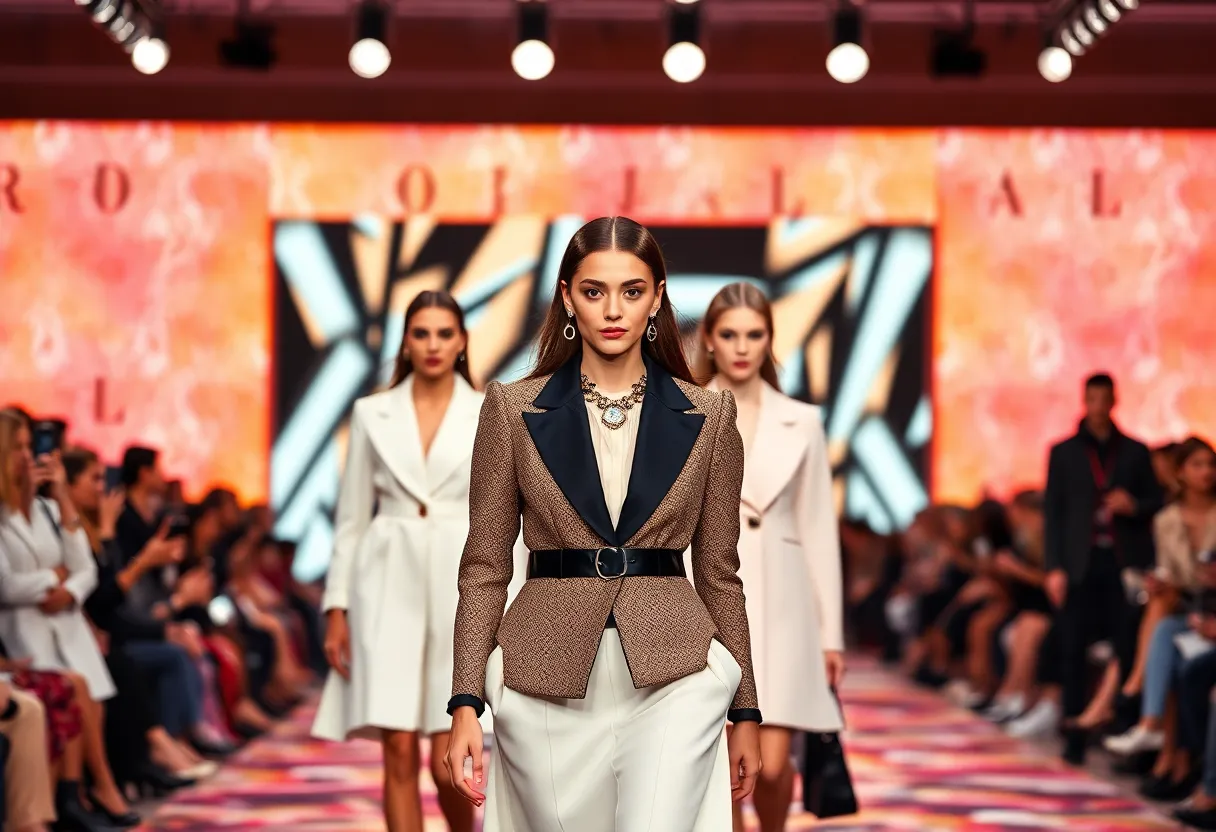News Summary
The luxury fashion landscape is experiencing significant shifts as Dior reclaims its position in digital performance while Ralph Lauren breaks into the top five brands. Despite hurdles from changing political climates and a drop in social media engagement, some brands have adapted successfully, leading to a broader trend towards premium options over high-end luxury. The upcoming Digital Product Passports could further transform the industry.
Dior Regains Digital Dominance as Ralph Lauren Enters Luxury Fashion’s Top Five Amidst Social Media Challenges in H1 2025
The luxury fashion landscape has undergone quite a transformation in early 2025, as highlighted by the latest Vogue Business Index, which evaluates 60 leading luxury brands based on their revenue and online presence. Released in April 2025, this bi-annual scorecard reveals some fascinating shifts in digital performance among top players.
Political Ripples Impact the Digital Realm
As the political scene in the U.S. changes with Donald Trump back in the presidency, the digital landscape is also facing its own set of challenges. Just recently, TikTok, the social media darling, was banned and then reintroduced on January 19, which has rattled the online marketing strategies of luxury brands. To add to this, Meta tweaked its policies regarding fact-checking on Facebook and Instagram as early as January 7, causing quite a stir among House Democrats who voiced their concerns.
Dior Triumphs with Digital Performance
Despite these challenges, Dior has bounced back spectacularly, reclaiming its top spot in digital performance. The brand successfully surpassed its close competitor, Louis Vuitton, which briefly enjoyed the lead during the last half of 2024. Notably, this recent win indicates a strategic focus by Dior to enhance its engagement on both Western and Chinese social media platforms.
What’s particularly exciting is Ralph Lauren making its debut in the top five, a ranking it has not achieved before. Ralph Lauren’s climb to the ranks pushed Chanel down, marking a significant shift in the competitive landscape of luxury fashion.
Premium Brands Gaining Momentum
The rise of Ralph Lauren signals a broader trend where more consumers are willing to shift from high-end luxury to premium brands. With rising prices affecting consumer behavior, it’s no surprise that about 24% of consumers indicated a preference to explore cheaper alternatives, reflecting the challenges many luxury brands are currently grappling with.
Interestingly, there’s something being noted as a ‘digital recession’ within the luxury sector, indicated by a decline in social media engagement. Engagement metrics have plunged significantly, with Instagram interactions down 19% and a staggering 93% decrease in views on YouTube!
Exceptional Performers in a Tough Landscape
Yet, brands like Tommy Hilfiger, Dior, and Ferragamo have thrived amid this decline. Surprisingly, a substantial 40% of luxury consumers are discovering brands through social media, while a similar percentage are utilizing these platforms for research prior to purchase decisions. This has led brands to re-evaluate their marketing strategies, emphasizing entertaining and meaningful content while still holding true to values like quality and innovative design.
Fresh Faces in the Luxury Game
Among the notable newcomers to the Index are Ami Paris, Jacquemus, and Maje. With rankings of 38, 39, and 60 respectively, these brands are bringing fresh perspectives to the digital arena. Ami Paris uses traditional digital strategies and celebrity campaigns to highlight its heritage, while Jacquemus is captivating attention with playful content tailored for social media. However, Maje’s impressive follower count isn’t translating into engagement, suggesting a need for a cultural pivot in its digital approach.
Shifted Focus on Chinese vs. Western Social Media
It’s fascinating to see how these brands have varying degrees of success on Chinese compared to Western social media. Localized marketing tactics have revealed that Ami Paris and Maje have greater brand recognition in China than Jacquemus. The impact of celebrity influence remains undeniable, as luxury brands leverage star power to enhance visibility and engagement.
Prada and Miu Miu Shine Bright
Brands like Prada and Miu Miu maintain their footing in digital performance through strong cultural ties. Prada’s strategic events yield impressive social engagement, while Miu Miu’s approach through star-studded partnerships has seen a notable improvement in its digital ranking.
The Rise of Digital Product Passports
In light of upcoming EU regulations, Digital Product Passports (DPPs) are set to become the new standard, providing a digital identity for luxury items and enhancing customer interaction. However, brands face challenges in educating consumers about DPPs, ensuring awareness around this new feature, and making these digital identities appealing. We might be looking at potential hurdles regarding consumer familiarity with technology, which could limit the adoption rates.
The luxury fashion realm is undoubtedly undergoing a seismic shift, driven by both external circumstances and internal strategies. As brands navigate these complex waters, their ability to engage and adapt will determine their future in this competitive industry.
Deeper Dive: News & Info About This Topic
HERE Resources
Latest Trends in Fashion: Angel Reese, TikTok Influence, and K-Pop Collaboration
Additional Resources
- Vogue Business: Traditional Digital Marketing Is Going Amiss
- Netguru: Disrupting the Luxury Fashion Market
- Business of Fashion: Millions of Luxury Products Have Digital IDs
- Luxury Daily: Digital Dilemma in Luxury Brands
- Jing Daily: Luxury Giants Rally Behind New Digital Fashion Initiative
- Wikipedia: Luxury Brand
- Google Search: Luxury Fashion
- Google Scholar: Luxury Brands Digital Marketing
- Encyclopedia Britannica: Luxury Brands
- Google News: Luxury Fashion Trends








